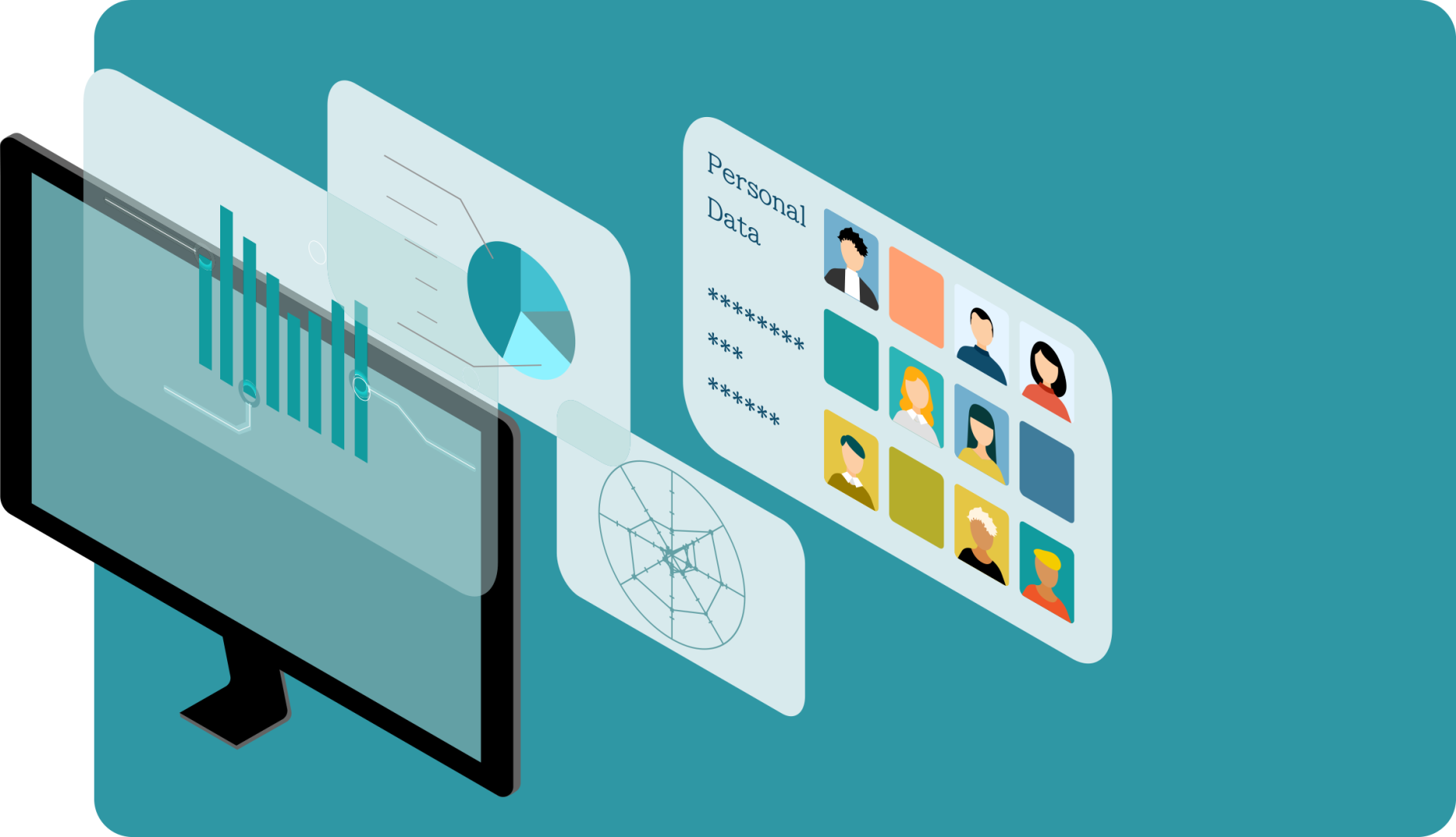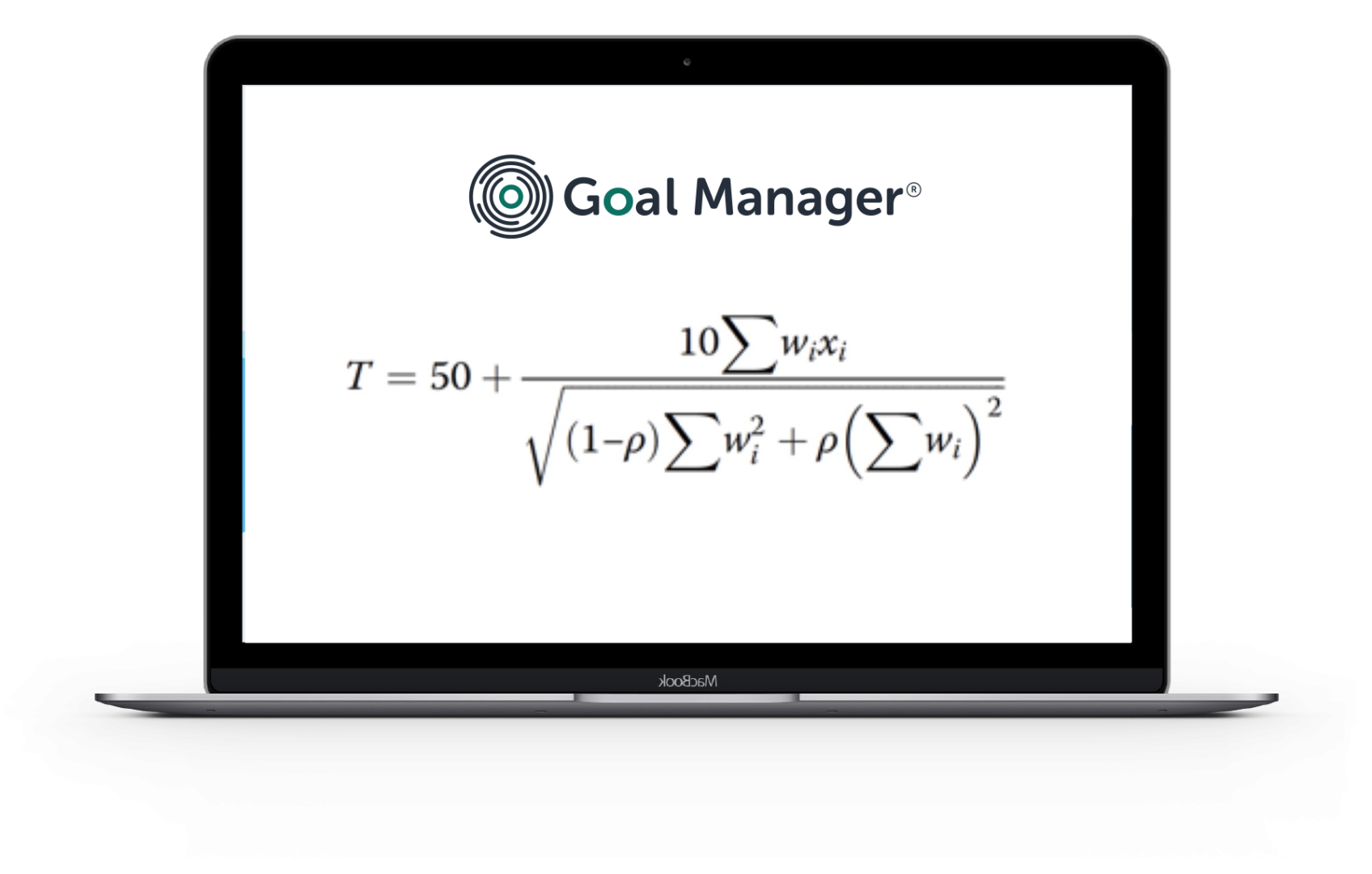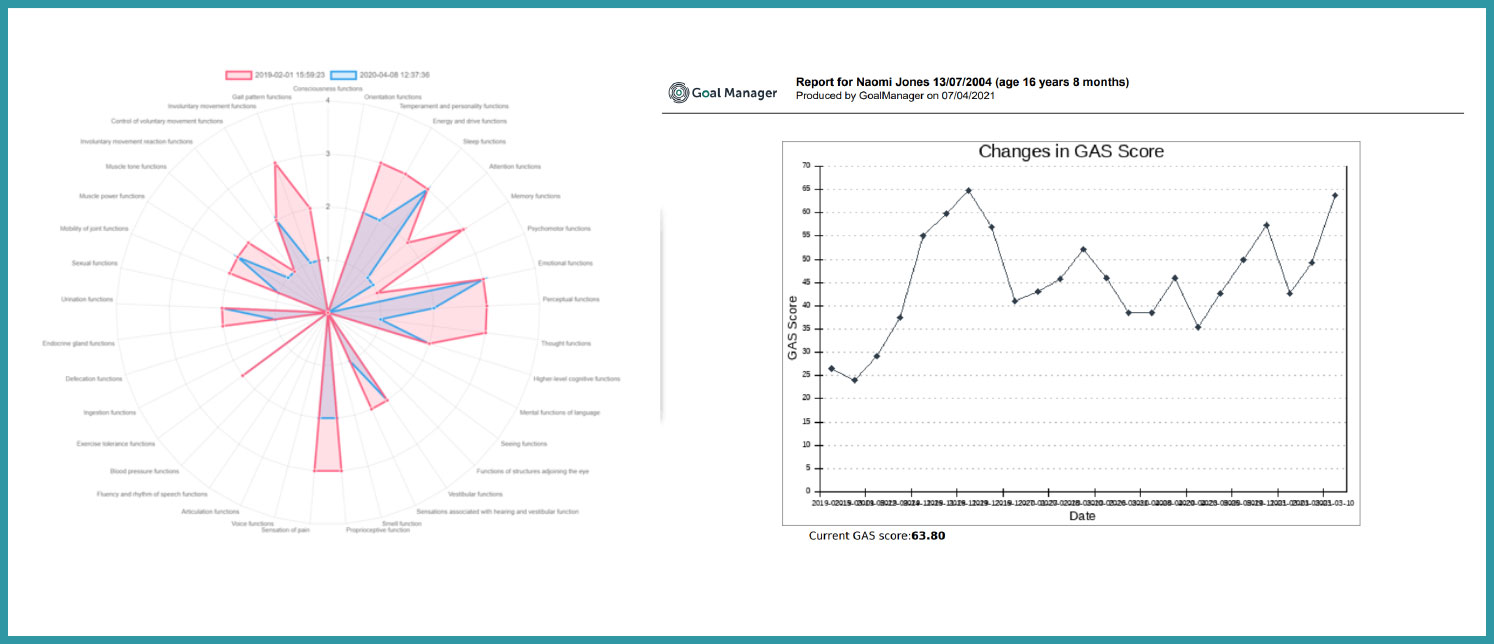Goal Manager® Help
If you are using Goal Manager® for the first time, take advantage of our free videos on the Support Space. See here.
These can be used to see the current presentation of a client along with what you and/or team members have been doing to help them achieve their goals. See what is working and what is not and find out why.
As the lead clinician of a team, you can use this report as the focus of your MDT meetings to discuss your clients progress and ongoing rehabilitation needs. It will show you all the clients’ goals, all the objectives the team are working on to help the client reach their goals and can show any comments/updates team members have made.


Individual clinicians and therapists can produce their own reports outlining the objectives and goals they are currently working on and evidencing all the steps that they been doing to help the client achieve these.
Meeting Report:
| What you see as default | What you can choose to add to meeting the report |
| Information displayed is about the whole team | Information displayed is just about you |
| Graph showing the change in GAS score over time | Goals: Achieved |
| Current GAS score | Goals: Archived |
| All current goals | Latest Comments by you or staff team on Goals |
| Current goal scaling stage | All comments by you or your staff team on goals |
| Up to last 5 previous goal scaling stages | Objectives completed |
| Importance and difficulty of the goals | Objectives which have been flagged |
| Latest comments by you or your staff team on objectives |

These add to meeting reports. As well as everything the meeting report can do, they can:

| What you see as default | What you can choose to add to meeting the report |
| List of team members working with client | Select a date range from any period in the clients rehabilitation |
| Information about functional assessments | All calendar entries |
| Graphs showing functional change from previous ICF’s | ICF assessments, choose up to two which will be displayed |
| Current facilitators and barriers | Goals: Achieved |
| All current goals | Goals: Archived |
| Current goal scaling stage | Latest Comments by staff team on Goals |
| Up to last 5 previous goal scaling stages | All comments by staff team on goals |
| Importance and difficulty of the goals | Objectives current |
| Current GAS score | Objectives completed |
| Graph showing the change in GAS score over time | Latest comments by staff team on objectives |
| All comments by staff team on objectives |
Our users use these reports for a wide variety of meeting including for MDT meetings, goal planning, extended meetings, SEN reviews, performance reviews, LAC reviews and providing evidence to fee payers.